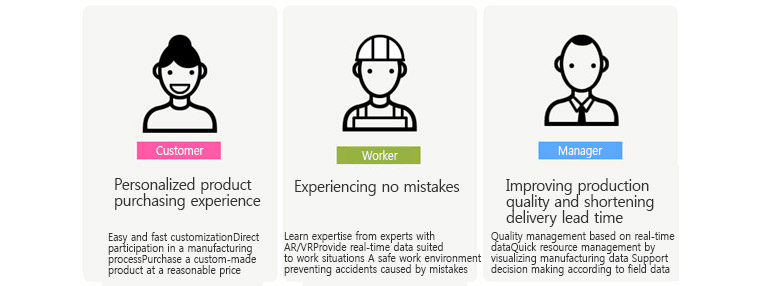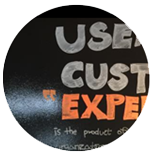Reducing factory accidents through digital design and new technologies - smart helmets and FaaS
![[ Seies ] Customer Experience Innovation Report (Part2 ) Smart Factories : Factories don't make mistakes, only humans do](https://image.samsungsds.com/en/insights/factory_t_eng.jpg?queryString=20220610012529)
Factories are where a variety of technologies are quickly introduced to improve productivity. However, the 'factory' still seems to be a dangerous and rough place because efforts to improve production quality and efficiency have continued without enough consideration for workers. But is it ok to overlook industrial workers so easily? According to experts, the roles of people in industrial sites are still very important. That's because of human error.
Human errors result in great damage
Once an accident occurs on the shop floor, which can cause serious human and material damage, it becomes a big burden on the company. That's why finding ways to avoid human error are very important for companies.

People sometimes don’t carry out actions as intended or planned or miss actions (slips & lapses); they do something believing it to be correct when it was, in fact, wrong (mistakes). Sometimes they do things they are not supposed to do (violations). These mistakes are made by men, resulting from a variety of factors. Companies can reduce the enormous damage caused by human errors by finding various causes of mistakes and taking proper action.

Design preventing mistakes
Fool-proof system is a system to prevent people from making mistakes in advance, thereby preventing accidents caused by human errors.
What should we do to prevent human error? Let's look at how the fool-proof system works with the following simple example.

Consider a valve in a factory. Normally, the closed valve is horizontal as above, but you have to pull it up to open it. If you pull it down or if it is not open when needed, this becomes a human error. To avoid this kind of mistake, the following solutions are required.
Firstly, proper instructions should be given for the right behavior. If there is a clear guideline about which direction to pull, there is no need for confusion.
 Secondly, workers should be informed about the guideline—when to open and close the valve—so that they can take necessary action in time.
Secondly, workers should be informed about the guideline—when to open and close the valve—so that they can take necessary action in time.
 Thirdly, a defensive system that only works with the right method should be implemented to prevent accidents in the first place. If the valve won’t move in the opposite direction, there is no place for an accident.
Thirdly, a defensive system that only works with the right method should be implemented to prevent accidents in the first place. If the valve won’t move in the opposite direction, there is no place for an accident.

It’s easy to understand how the complex and difficult smart factory system works because, in the end, it reflects people’s behaviors. Let's look at how this design works through actual technologies.

The first way to reduce human error is to induce the correct behavior. But it takes a lot of time for a beginner to do his or her job. This problem can be solved by learning the know-how and experience of senior workers, the so-called masters, through the latest technology. The work process and problem solving ability of a skilled worker on a complex task can be digitized and utilized as a guide and manual that can be easily used by unskilled workers.
CASE . AR Integrated Diagnostic Solution & Smart Helmet
Global fighter manufacturing company L utilizes smart glasses with cameras and sensors on the front and an augmented reality solution, allowing engineers to view overlay images. 3D overlay images provide a variety of information needed for the product process, including assembly location, demonstration, error analysis, and process steps. For example, when an engineer is installing parts of a landing gear, all of the bolts and cables around the wheels are checked first with the rendered image. Then he can work efficiently following the work stages by each part. This allowed engineers at L to work about 30% faster and increased the process accuracy up to 96%. Also, staff training costs and time have been reduced, and in comparison with taking classes or reading manual, engineers’ memories have nearly doubled, further deepening their engineering knowledge.
Company G's Smart Helmet connects field engineers directly to experienced colleagues at HQ to guide them through complex tasks with audio and video. The engineer’s helmet and iPad are equipped with two small monitors. This enables two-way communication, which allows the engineer to receive specific feedback on the tasks to be performed by the head office manager, increasing accuracy in his performance.

There are various problems in the production line. But finding out the exact cause is difficult. In order to solve this problem, the smart factory indicates operation status or errors of the machine in real time through its sensor. This data empowers the operator to identify the cause of the problem and solve it, and prevent the problem beforehand, minimizing the production delay time. In addition, visualized information can be viewed through a variety of devices, allowing the operator to identify problems and make decisions right on the spot.
CASE. Identify and solve issues with Samsung SDS solution
A chipmaker A was experiencing a drop in production rate due to defective products, but couldn’t find out the cause, resulting in a steady increase in production costs. After introducing our company's solution, the company was able to extract and analyze only the data related to the problem among hundreds of thousands of sensor data attached to each manufacturing equipment within a few minutes; it turned out there was a problem with ion implantation process. Its production rate rose by resolving the root cause of defective products from taking corrective action while closely checking the data related to the process. Furthermore, the data can be used to analyze equipment aging and diagnose facilities in real time, reducing production lead times.


On a production line, a worker can make mistakes unintentionally, e.g. pushing the button accidentally or working without the safety device. A smart factory has a built-in protection system to prevent accidents, resulting from these mistakes. For instance, if a worker dropping a spanner on the production line unwittingly enters the line, the sensor will recognize it and temporarily shut down the line and protect the operator's safety.
CASE. Quality safety assurance system of a global electrical parts manufacturing company
H Company which assembles various kinds of parts in one production line at once takes advantage of the bar code system to prevent an operator from making a mistake. Every time the parts are assembled / mounted, the screen in front of the worker provides their information, and he/she reads their unique number with a barcode reader to check whether they are correct. When the operator tries to assemble the wrong part, the alarm goes off with the red mark on the monitor and the production line stops, stopping him/her from assembling the wrong parts.
Finally, we can summarize the effects of the zero human error at the smart factory as shown above: a safe working environment, relieving the mental pressure from making mistakes, empowering beginners to work like experts, improving product quality, shortening delivery time, and saving cost.
Epilogue
We have looked at the changes that the smart factory will make in two parts of series: Living Factory - Smart Factory.
In part 1, "Manufacturing as a Service (FaaS)," we talked about the experience innovation that the smart factory can quickly produce the products that customers want.
In part 2, "Zero Human Error" covered the experience innovation that increases efficiency and productivity in the smart factory by preventing workers from making mistakes.

Innovation in future manufacturing sites will bring new experiences for customers, operators, and executives.
▶ The contents are protected by copyrights laws and the copyrights are owned by the creator and Samsung SDS.
▶ Re-use or reproduction as well as commercial use of the contents without prior consent is strictly prohibited.

Samsung SDS’s CX Team, Service Design Research Group conducts research on experience innovation and changes in experience and appealing point of various stakeholders by ICT development and environment change from a new perspective.